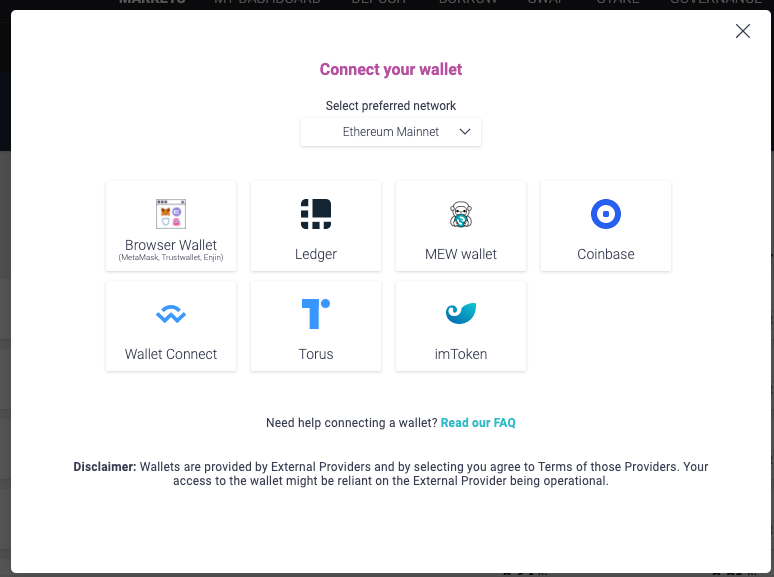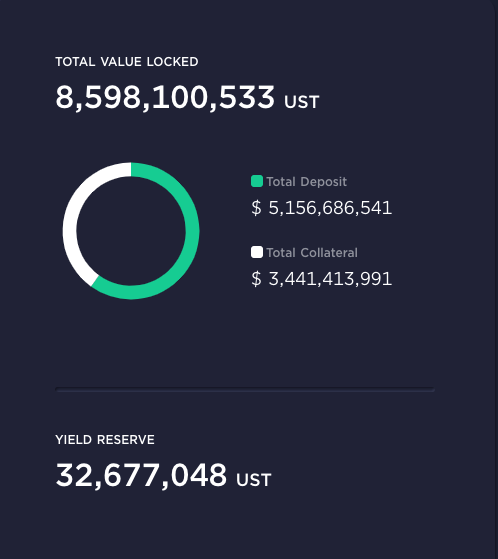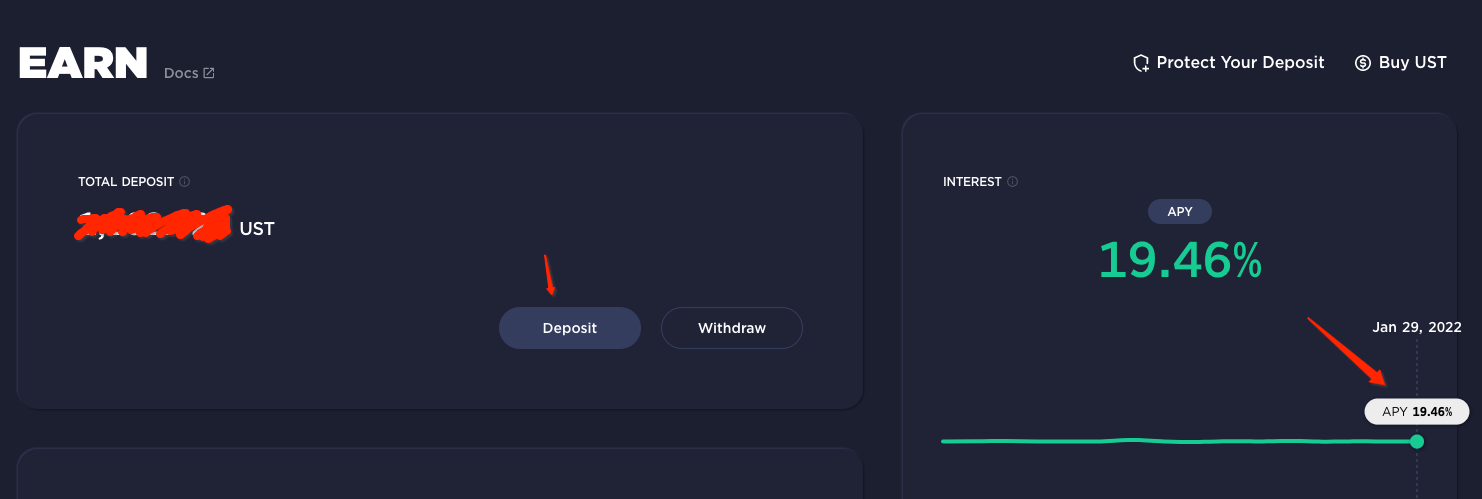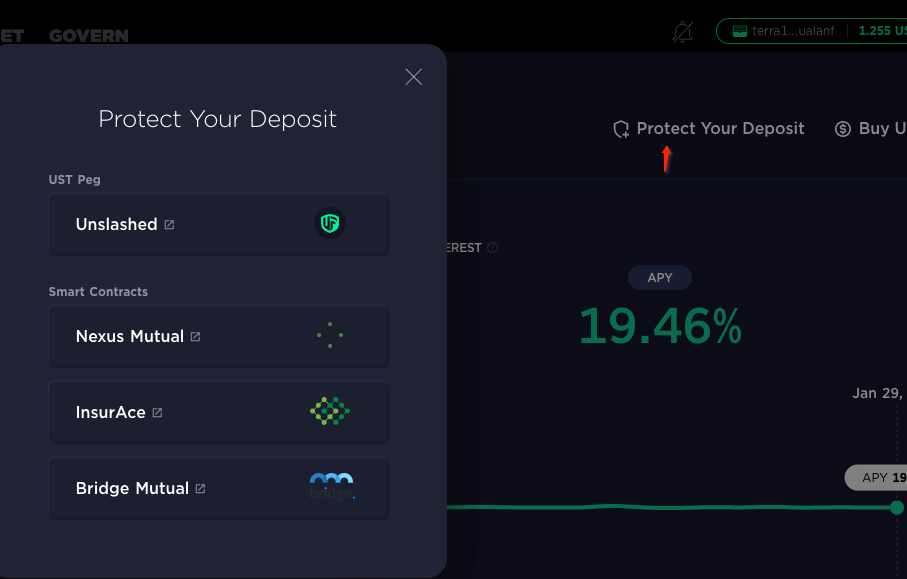Earn 19% APY on your saving! - Unlocking DeFi
Thinking about earning 19% interest on your saving. This post explains how to use DeFi to earn passive interest and also how to get started with Aave and Anchor protocol.

If you had come to me a few years ago and said there is a way to earn more than 10% interest on your saving, I would have laughed my ass off.
Not to complain, saving hard-earned money is extremely difficult to start with. If you sign up with one of the below bank accounts promising higher interest, then fall under the false expectation that your money is growing.

Hear me out for a second; while I don't undermine the importance of having a saving account, what bothers me is that the banks promise a max of 2.5% earnings per annum, whereas inflation is at 3.5%

For example, if you have saved $100 with a high-interest bank account for a whole year. You would have earned $100 x 1.025 = $102.5 simultaneously; the value of your money is $100 due to inflation would have become $96.5. In total, you have lost $1.
To make it harder, most of these saving accounts generally have a few requirements to be eligible for higher returns, such as
- Minimum monthly deposit
- Restriction fund withdrawal
- Minimum balance
I looked at investing as an option to protect losses against saving. This includes investing in a wide range of investment products (stocks, bonds, real estate, equity and more) to achieve a long-term stable growth that at minimum beats the inflation rate.
"Save to invest, don't save to save. The only reason to save money is to invest it" - Grant Cardone
But the question is 'Is there any other mechanism to attract better earnings for my saving' - Yes, thanks to DeFi.
Before you read further - This is important 👇
By no means does this post is financial advice of any sort. The post is a capture of my learning and experience of DeFi. I have personally invested in the below-mentioned protocols, which carries risk. Please consult your financial advisor for any financial advice.
What is DeFi?
DeFi stands for Decentralised Finance.
Unlike centralised finance, banks rule the land through centralised exchange and human gatekeepers. DeFi utilises blockchain, cryptography and smart contracts to provide a suite of financial services with greater efficiency and ease.
With centralised finance, we lose money due to higher interest rates, inflation, service fee and as asset owners, we often don't have control over the money. With smart contracts and DApps (Decentralised applications), DeFi can offer super low cost and highly efficient services to users.
DeFi has opened a new avenue to access financial services with the following five areas.
- Stablecoins
- Lending and Borrowing
- Decentralised exchanges
- Insurance
- Margin Trading
How to get started?
For this post, I will share my learnings from two DeFi protocols - Anchor protocol and Aave.
If you don't have a wallet setup, you would need the below wallets
- Anchor Protocol - Terra Station - https://station.terra.money/
- Metamask Wallet - https://metamask.io/
Your wallet should have the coins that you would like to deposit. You can buy these coins from cryptocurrency providers. Offer 🚨 - Receive 5% off your trade with Binance - click this link.
What is DeFi Staking?
It is a process where you can lock/stake your crypto tokens into a DeFi protocol or smart contract to earn yield (APY) as tokens in return. Quite similar to how your bank operates, providing you interest on your deposit over time. You can stake several crypto tokens based on the DeFi protocol and what network it operates.
But why does the protocol give more tokens in return for my stake?
By staking your crypto asset in a DeFi protocol, you become a validator of the network. All proof-of-stake blockchain protocol requires these validators to secure the protocol and protect it from bad actors. The protocol rewards these validators for staking their tokens to secure the network.
DeFi Platforms
Aave - https://aave.com/
Aave is one of the world largest DeFi liquidity protocol, where users can interest on deposits and borrow assets.

Four steps to deposit in Aave
- Enter App on Aave website
- Connect your wallet

3. Choose market chain

Based on different markets, you will find different deposit APY and borrow APY
4. Select the asset you like to deposit or borrow.

You can withdraw the assets anytime, and you will also notice your assets growing instantly.
Anchor Protocol - https://www.anchorprotocol.com/#
Considered to be the benchmark in DeFi saving with APY of 19%. Anchor protocol works on the terra network and currently holds $8B assets on the protocol. Anchor protocol uses TerraUSD (UST) stable coins. To access this protocol, you would need a terra station wallet.

Steps to earn on Anchor
Click on the web app icon on the anchor homepage and enter the application. In the web application, click on earn to deposit to UST.

Once you have moved UST to the terra wallet, you can easily deposit the asset and instantly put it into action on the protocol.

The cool thing about Anchor is the simplicity of the application and instant high APY on your deposits.
Another good thing about this protocol is the ability for you to protect your deposit by getting sufficient insurance (to cover both stable coin volatility and smart contract security)

Can I lose money on DeFi?
I would be lying if I said No. here is a risk of losing money on DeFi. One of these risks is called "Impermanent loss."
Impermanent loss occurs when your token price changes compared to when deposited into the pool. This loss becomes permanent realised only when the assets are withdrawn, and the risk increases with the magnitude of the change. Although liquidity provision can benefit a liquidity pool, knowing how to avoid impermanent loss is crucial.
How to select the best DeFi protocol to stake?
- Choose DeFi liquidity that has a single type of asset (instead of two-currency paid). n these LP, you can simply supply a stablecoin such as UST (in Anchor) to the pool to ensure its solvency
- Check the total value locked in the protocol, the amount deposited and the amount borrowed. It is simple math; if there are fewer borrowers, then the interest yield for the lender is less.
- Check for the collateral required to borrow from the LP. this collateral builds the confidence that borrowers will return the asset and the protocol operates with a high amount of collateral to protect the lender's assets
- Ensure the protocol's smart contract has sufficient audited open to the public and you understand the mechanics of how their tokens are pegged.
Hopefully, this post gave you a quick overview of DeFi and how to earn interest by saving with DeFi. Always encouraged to learn, assess the risks and only invest less money (that you can afford to lose) to better understand DeFi.
If you are investing in the other DeFi protocols? please share it in the comments and also share your general thoughts about saving on such DeFi platforms
SideGig Newsletter
Join the newsletter to receive the latest updates in your inbox.




